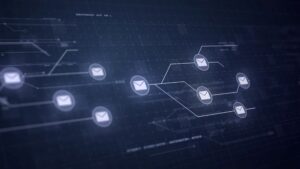Schlagwort: ‘E-Mail-Sicherheit’
Email Security – Evaluation and Application of the SPF Policy
In this post of our email security series, we would like to inform you about an upcoming tightening of the SPF policy that will apply to RWTH Aachen University as of December 5, 2024. The change will prevent RWTH email addresses from being used as sender addresses by mail servers outside of RWTH Aachen University in the future. This will further increase email security at our university. Please note that this article is mainly intended for mail administrators of RWTH institutions. (*)
Basics at RWTH: E-Mail

Source: Freepik
As part of our blog series “Basics at RWTH”, today we are introducing you to the RWTH e-mail service, which is essential for your daily communication in everyday university life. We have compiled the most important information for you so that you can get started quickly and easily with your e-mail inbox – if you haven’t already done so.
Email Security – How to Configure Forwarding Correctly

Source: Freepik
In this article in our mail security series, we will show you how to configure the forwarding of incoming mails. In our previous articles, we have informed you about the problems involved in sending mails, possible security vulnerabilities and security mechanisms that have already been implemented and explained why redirects are bad. This article is about setting up forwarding in the RWTH Mail App, also known as “OWA” (Outlook Web App).
Email Security – Evaluation of DMARC Policy for Incoming Emails

Source: Pixabay
In the fourth part of our e-mail security series, we would like to inform you about an innovation in our e-mail security policy.
After we reported on e-mail, e-mail statistics at RWTH Aachen University, and the SMTP protocol and its pitfalls in the first and second articles, and informed you about the DKIM identification protocol and DMARC in the third article, this fourth part is now about a new e-mail security requirement. To ensure that RWTH can continue to provide a secure e-mail service in the future, we have decided to introduce the evaluation of a sender’s DMARC policy when accepting mail at the university’s central mail gateway. You can find out what this means in this blog post.
Email Security – Why Are Redirections Bad?

Source: Freepik
The third part of our series of articles on e-mail security deals with the identification protocol DKIM and the standard method for e-mail authentication DMARC.
In our first article and second article on the topic of e-mail security, we informed you about the origins of e-mail and the current statistics in mail traffic at RWTH. In addition, we explained what the SMTP protocol is and what problems it can cause.
Email Security – The SMTP Protocol and Its Problems (Sending and Receiving)

Source: Freepik
In our first article on the topic of e-mail security, we gave an insight into the historical development of email. We briefly explained how email exchange works and referred to the statistics of the email service at RWTH Aachen University.
Today we’ll tell you about the transmission protocol “Simple Mail Transfer Protocol” (SMTP) and its pitfalls.
Email Security – E-Mail & Mail Statistics at RWTH

Source: Freepik
About 50 years ago, the first e-mail was sent – albeit between two computer systems that were part of the same local network. In the 1980s, the internet was opened up to a larger circle of users and e-mail was given its own transmission protocol “Simple Mail Transfer Protocol” (SMTP).
Even today, the exchange of messages via e-mail is undoubtedly an important way of exchanging information between parties via an asynchronous communication channel.





